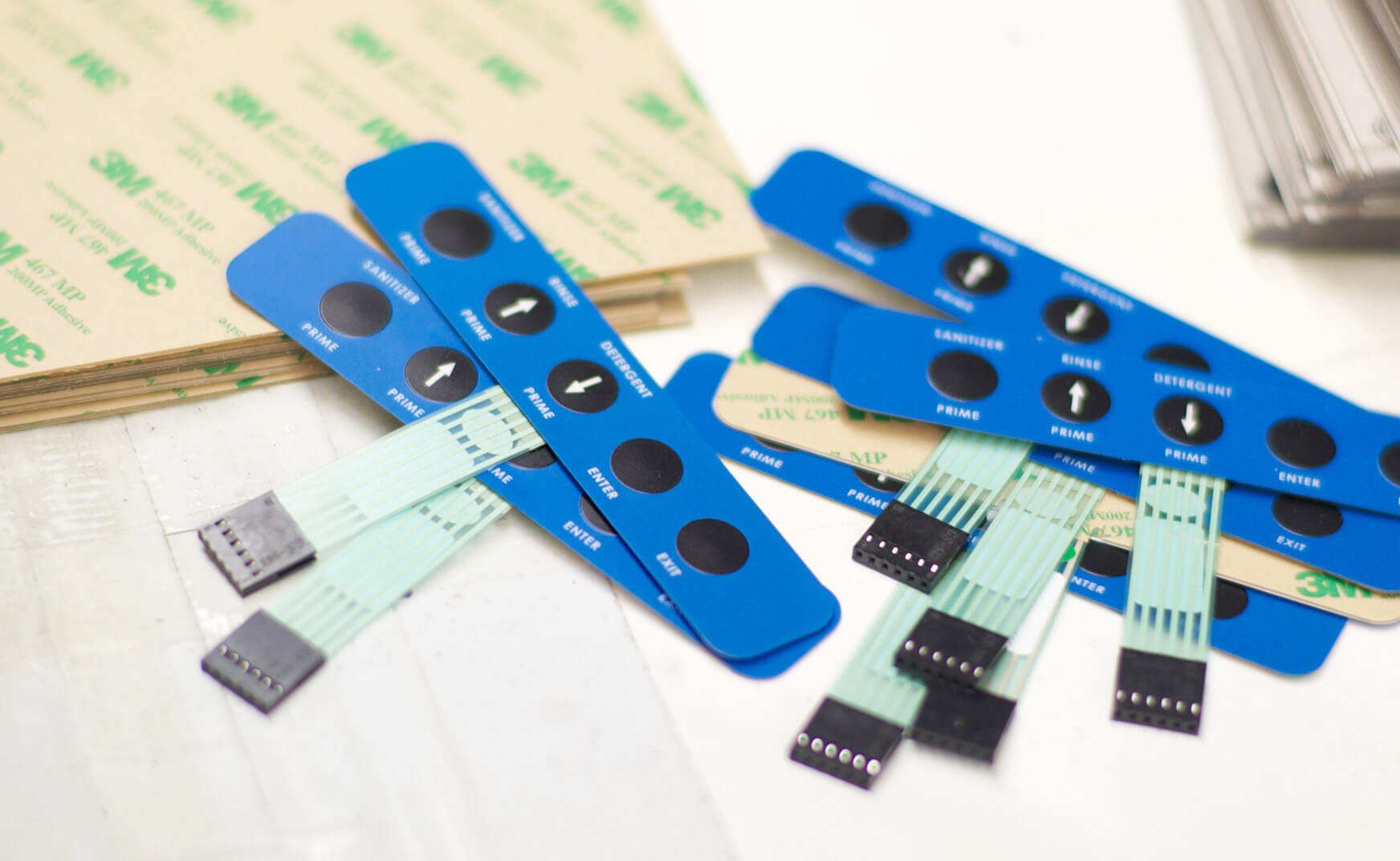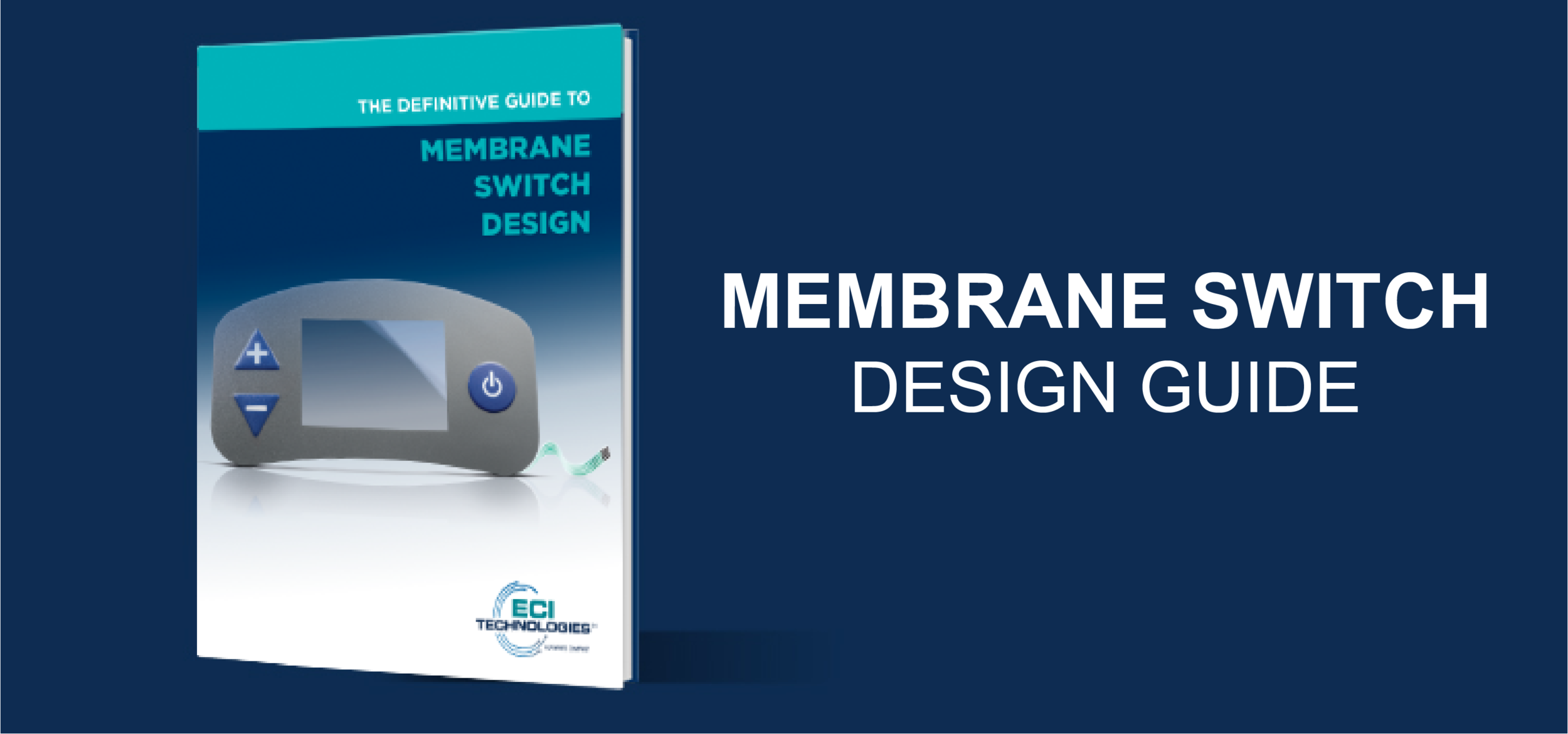Membrane Switches: The Best Choice for Compact and Reliable Controls
Membrane Switches: The Best Choice for Compact and Reliable Controls
Blog Article
Discover How Membrane Switches Function and Their Function in Modern Electronics
Membrane Switches stand for an advanced integration of technology and layout within the world of modern-day electronics, serving as necessary interfaces in countless gadgets. Consisted of several layers, these switches utilize pressure-sensitive systems to promote user interaction. Their applications extend different sectors, from consumer electronic devices to medical tools, highlighting their convenience and significance. Understanding the ins and outs of Membrane switch performance and their wider effects in improving customer experience invites more expedition right into their style, advantages, and the ingenious advancements shaping their future in modern technology.
What Are Membrane Buttons?

Membrane switches are differentiated by their longevity and resistance to ecological factors, such as dust, moisture, and severe temperatures. They can be tailored with numerous graphics, shades, and responsive feedback alternatives, improving customer experience while keeping aesthetic appeal - membrane switches. In addition, the consolidation of printed circuits allows for smooth integration into gadgets, boosting overall performance.
The convenience of Membrane switches appears in their capability to sustain both easy and complex control functions. They can integrate functions such as LED indications and touch-sensitive technology, accommodating details customer demands. As modern technology continues to advance, Membrane Switches stay crucial for allowing user-friendly and effective customer interfaces, consequently playing a critical function in the innovation of modern digital gadgets.
Components of Membrane Buttons
Membrane switches are composed of several crucial elements that function with each other to develop a useful and reliable interface. The main components include the visuals overlay, adhesive layer, spacer layer, and conductive traces.
The visuals overlay acts as the customer interface, generally published on an adaptable substratum such as polyester or polycarbonate. This layer not only offers aesthetic appeal yet additionally consists of tactile feedback, aesthetic hints, and protective attributes. Under the visuals overlay lies the glue layer, which safeguards the switch to the gadget and makes certain sturdiness versus environmental anxieties.
The spacer layer is critical for preserving the essential void in between the visuals overlay and the circuit layer. When stress is applied, this void enables for the activation of the switch. The conductive traces, generally made from silver or carbon, create the electrical pathways that complete the circuit when the switch is engaged.
In addition, a support layer might be consisted of for architectural support and insulation. These components work together seamlessly, making certain that Membrane buttons are both durable and straightforward, making them important in different contemporary digital applications.
How Membrane Switches Work
Just how do Membrane Switches feature effectively within digital devices? Membrane Switches run on the concepts of pressure-sensitive innovation, using a More Bonuses layered construction that includes visuals overlays, sticky layers, and conductive aspects.
The design of Membrane buttons is critical for their efficient operation (membrane switches). The layers are meticulously engineered to provide responsive feedback, durability, and resistance to environmental elements such as moisture and dust. The addition of domes-- tiny, raised areas within the switch-- improves responsive action, supplying customers with an obvious click experience upon activation
Moreover, Membrane buttons can be personalized in regards to size, form, and graphics, making them appropriate for numerous applications. They are frequently made use of in control panels, clinical devices, and consumer electronics as a result of their streamlined layout and dependability. Generally, the efficient performance of Membrane buttons is crucial in improving individual communication and making certain seamless webpage procedure in modern digital tools.

Applications in Modern Devices
Utilizing their special style and functionality, Membrane switches have actually come to be essential elements in a vast array of modern-day electronic devices. These versatile user interfaces are used in consumer electronics, industrial devices, medical tools, and automobile controls, providing smooth customer interaction.
In customer electronics, Membrane buttons are frequently found in devices like microwaves, cleaning machines, and other household tools, where they make it possible for user-friendly control with a sleek profile. Their low-profile style facilitates integration into portable gadgets, enhancing visual allure without compromising functionality.
In industrial applications, Membrane Switches function as control panels for equipment, providing sturdiness and resistance to harsh environments. Their ability to hold up against dampness and pollutants makes them ideal for use in production and handling sectors.
Medical tools additionally take advantage of Membrane switches, which are created to be very easy to tidy and keep, making certain hygiene in clinical settings. They are commonly utilized in analysis equipment, individual tracking systems, and mobile clinical devices, where integrity is extremely important.
Benefits of Membrane Switches
Among the crucial advantages of Membrane switches is their versatility, which permits them to be customized for a variety of applications across several industries. These buttons can be designed in different forms and sizes, suiting unique product demands while providing smooth combination right into gadgets. Their slim profile allows a smooth and portable style, usually boosting the visual appeal of digital products.
One more substantial benefit is their sturdiness - membrane switches. Membrane switches are typically immune to dust, moisture, and chemicals, making them excellent for harsh environments. This resilience prolongs their lifespan compared to typical mechanical buttons, lowering the demand for constant replacements
In addition, Membrane Switches offer cost-effectiveness. The production process entails printing technologies that lessen manufacturing costs, particularly for huge runs. This cost, integrated with low upkeep demands, makes them an appealing choice for makers.

Verdict
In verdict, Membrane Switches represent a substantial development in user interface modern technology within modern-day electronics. Their layered building and construction, pressure-sensitive operation, and adaptability to numerous applications highlight their significance across numerous industries. The resilience and environmental resistance of Membrane Switches better boost their appeal, making them a favored choice for producers looking for customizable and trusted services. As the demand for resilient and instinctive user interfaces remains to expand, the role of Membrane buttons fit individual experience will definitely broaden.
Membrane Switches stand for an advanced assimilation of technology and design within the world of modern electronic devices, offering as essential interfaces in numerous tools.In the realm of contemporary electronics, Membrane Switches offer as critical elements that assist in individual interaction with devices. As technology continues to progress, Membrane Switches remain important for making it possible for efficient and user-friendly customer interfaces, consequently playing an essential function in the development of modern-day electronic devices.
Exactly how do Membrane Switches function efficiently within electronic tools? you can look here Overall, the reliable performance of Membrane switches is critical in enhancing customer interaction and making certain smooth operation in modern-day electronic tools.
Report this page